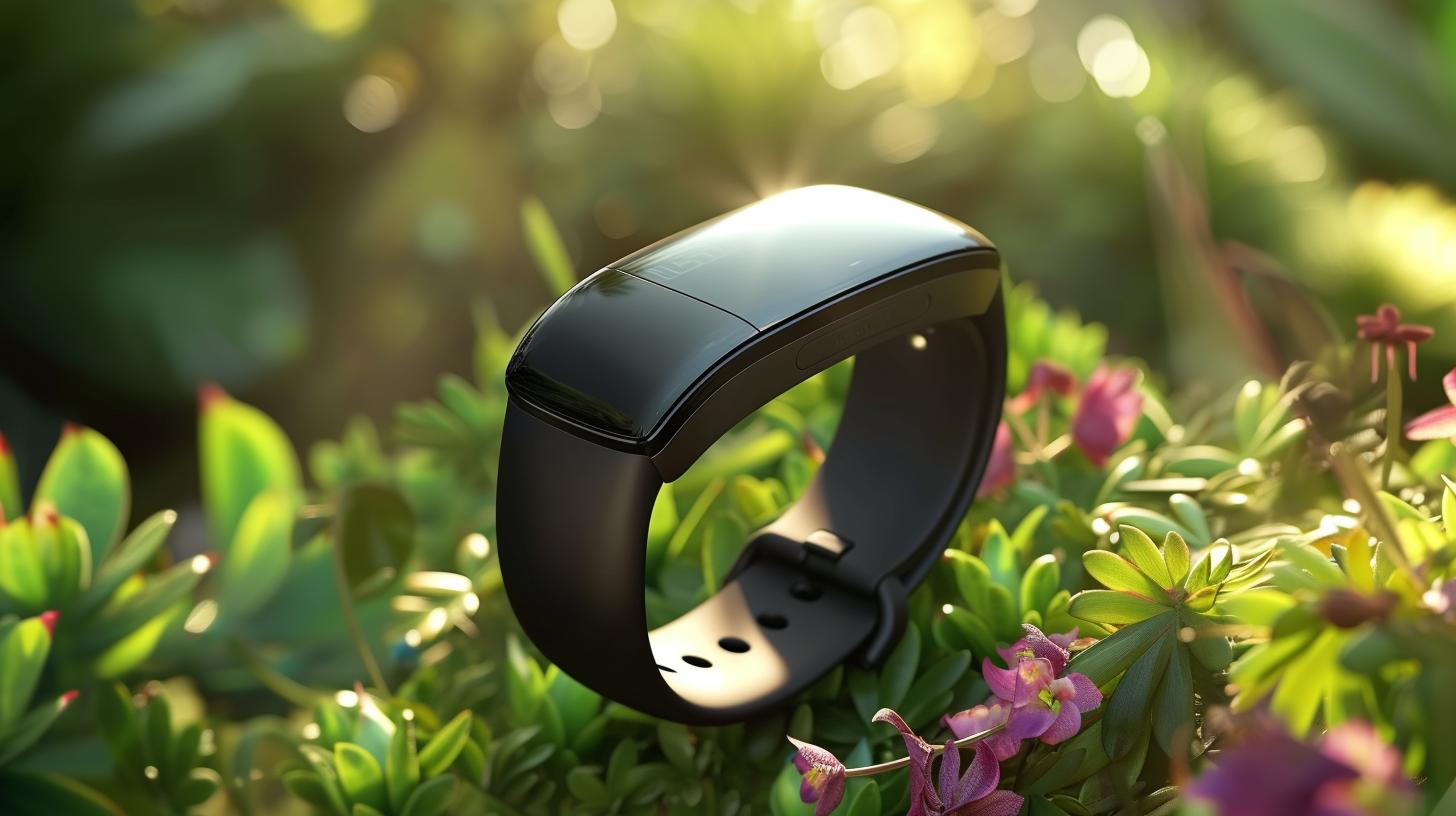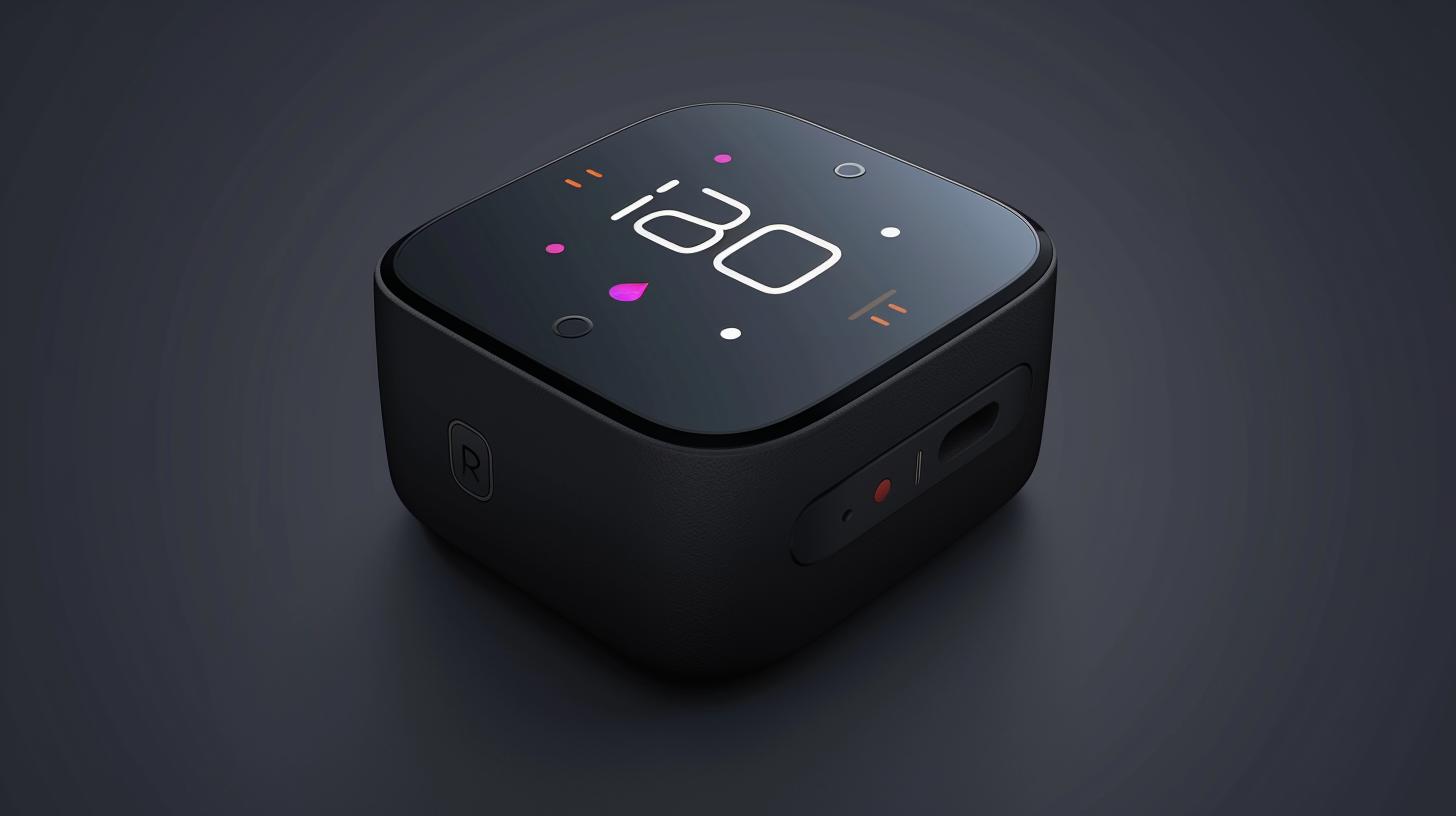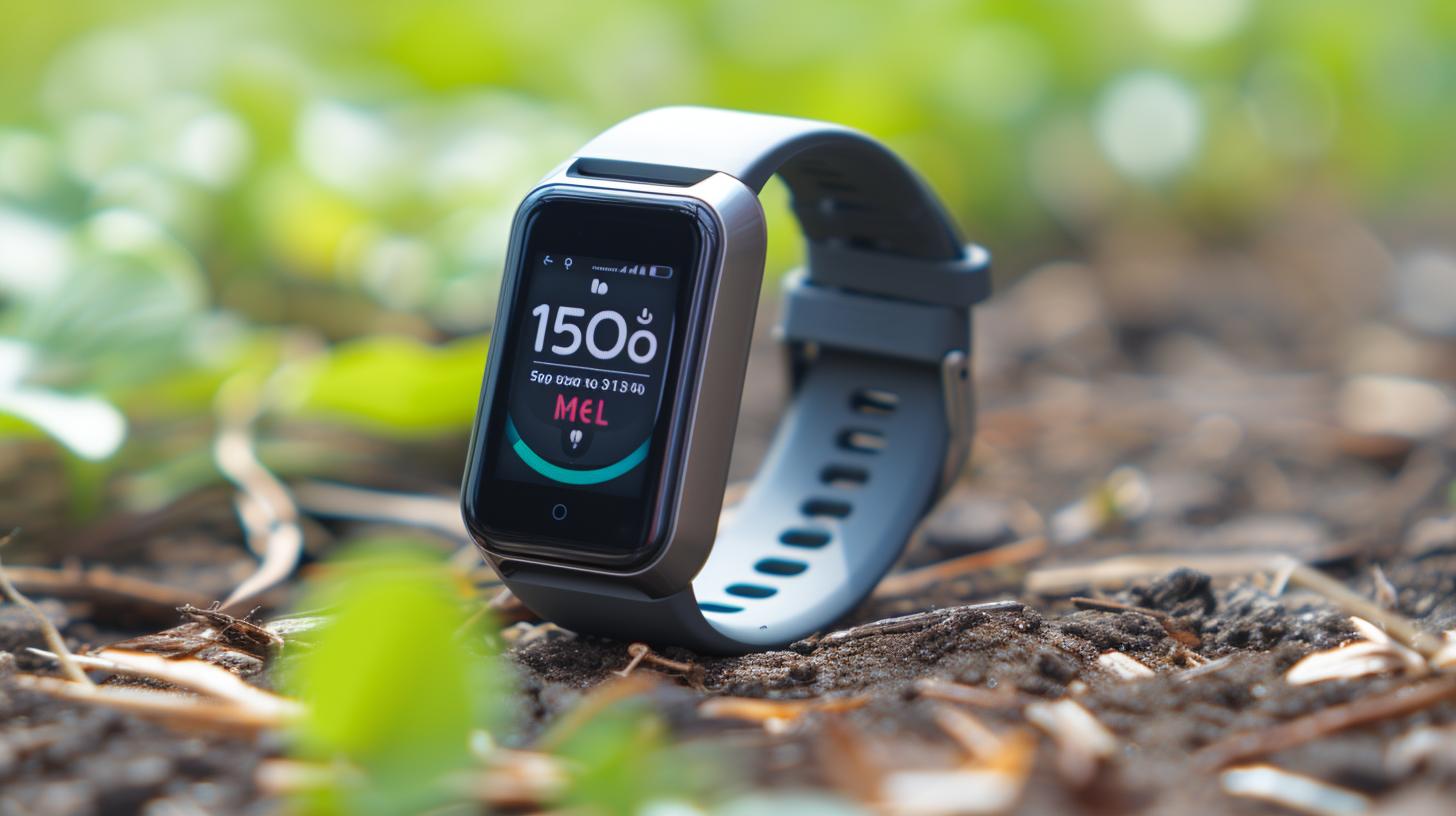
Are you wondering how to change Fitbit time zone on your device? Setting the correct time zone on your Fitbit device is essential for accurate activity and sleep tracking. Whether you’re at home or traveling, having the right time zone ensures that your Fitbit records and displays data correctly, helping you stay on top of your fitness goals.
Without the correct time zone, your Fitbit may not accurately track your daily activity, workouts, and sleep patterns. This could result in misleading data and ultimately affect the effectiveness of your fitness routine. In this article, we will provide a step-by-step guide on changing the time zone on your Fitbit device, ensuring that you can make the most out of its tracking features.
We will also discuss compatibility by addressing which Fitbit devices allow for changing the time zone and any limitations or restrictions that may apply. Additionally, we’ll dive into troubleshooting common issues and errors that users may encounter when attempting to change the time zone and provide practical solutions to resolve them.
Furthermore, we will explore the benefits of having the correct time zone set on your Fitbit device, such as accurate tracking of workouts and sleep. We will also provide tips and recommendations for adjusting the time zone when traveling to different time zones and address how changing the time zone may affect syncing with a connected smartphone.
By the end of this article, you will have a comprehensive understanding of how to effectively manage the time zone settings on your Fitbit device and ensure accurate data tracking for optimal fitness monitoring. So let’s get started with our step-by-step guide.
Step-by-Step Guide
Setting the correct time zone on your Fitbit device is crucial to ensure accurate tracking of your activity and sleep patterns. Whether you have recently moved to a new location, or are traveling to a different time zone, it’s essential to update the time zone on your Fitbit for precise data recording.
In this section, we will provide you with a step-by-step guide on how to change the time zone on your Fitbit device, including visual aids for easy reference.
To change the time zone on your Fitbit device, start by opening the Fitbit app on your smartphone and ensuring that your Fitbit is synced with the app. Once your device is connected, navigate to the “Account” tab at the bottom right corner of the app and select your device from the list of options.
From there, tap on “Time Zone” and then select “Set automatically” if you want your Fitbit to update its time zone based on your smartphone’s time.
If you prefer to manually set the time zone on your Fitbit device, turn off the “Set automatically” option and choose the desired time zone from the list provided. Make sure to confirm the changes by tapping “Save” at the top right corner of the screen. Your Fitbit will then update its time zone accordingly.
For those using a Fitbit device with a display screen, such as an Ionic or Versa model, you can also change the time zone directly from the device itself. Simply swipe left on the clock screen until you reach Settings, then scroll down and select Time Zone. Choose “Automatic” or manually set the desired time zone based on your preference.
Ensuring that both your smartphone and Fitbit device are in sync with regards to their respective time zones is essential for accurate data tracking. By following these simple steps and utilizing visual aids provided within this guide, you can easily change the time zone on your Fitbit device without any hassle.
Compatibility
Fitbit devices have become an essential tool for individuals looking to monitor their physical activity and overall health. However, ensuring that the time zone is correctly set on your Fitbit device is crucial for accurate tracking of your workouts, sleep patterns, and other daily activities. In this section, we will explore which Fitbit devices allow for changing the time zone and any limitations or restrictions associated with this feature.
Devices Allowing Time Zone Change
Most Fitbit devices, including the Versa, Charge, Inspire, and Ionic series, allow users to change the time zone directly from the device settings or through the companion mobile app. This flexibility ensures that users can easily adjust their Fitbit’s time zone when traveling or if they have recently moved to a new location with a different time zone.
Limitations and Restrictions
While many Fitbit devices offer the option to change the time zone, there may be some limitations based on the model or firmware version. Users should ensure that their particular Fitbit model supports this feature by referring to the official documentation or consulting customer support if needed. Additionally, some older Fitbit models may not have an automatic time zone update feature, requiring users to manually adjust the time when traveling.
It’s important to note that certain advanced features like GPS tracking and multi-sport modes may also be affected by changes in time zones. Users should familiarize themselves with any potential limitations associated with changing the time zone on their specific Fitbit device to avoid any discrepancies in data tracking.
Considerations for Choosing a Fitbit Device
When selecting a Fitbit device, especially for individuals who frequently travel across different time zones or live in areas with daylight saving changes, it’s essential to consider whether the device offers seamless adjustment of the time zone. The ability to conveniently change the time zone on a Fitbit device adds convenience and accuracy to the overall fitness tracking experience.
Therefore, users are encouraged to review each Fitbit model’s specifications related to time zone settings before making a purchase decision.
Troubleshooting
When it comes to changing the time zone on your Fitbit device, you may encounter common issues and errors that can be frustrating to deal with. Fortunately, there are solutions to these problems that can help you successfully update the time zone on your device.
One common issue that users may face when attempting to change the time zone on their Fitbit is difficulty in locating the correct settings. This can be particularly problematic for new users or those who are not familiar with the functionality of their device.
To address this issue, it’s important to follow a step-by-step guide provided by Fitbit, which outlines the process for changing the time zone. Additionally, reaching out to customer support or referring to online resources for assistance can help troubleshoot this issue.
Another frequent error that users encounter is synchronization problems between their Fitbit device and their smartphone after changing the time zone. This can result in discrepancies in activity and sleep tracking data. To resolve this issue, it’s recommended to disconnect and then reconnect your Fitbit device to your smartphone. Additionally, ensuring that both devices have updated software and are connected to a stable internet connection can help alleviate synchronization errors.
In some cases, users may experience issues where the time zone on their Fitbit device reverts back to its original setting despite multiple attempts to change it. This can occur due to software glitches or compatibility issues with certain Fitbit models. One solution for addressing this problem is performing a reset on your Fitbit device, which can often resolve persistent time zone issues.
Furthermore, if you are traveling internationally and need to adjust the time zone on your Fitbit device, you may encounter difficulties with automatic time zone changes. In such instances, manually setting the time zone based on your current location is recommended as a temporary solution until the automatic feature resumes functioning properly.
Overall, troubleshooting common issues and errors when attempting to change the time zone on your Fitbit requires patience and persistence. By following specific steps provided by Fitbit and utilizing available resources for support, you can effectively address these challenges and ensure that your device accurately reflects the correct time zone settings for accurate activity and sleep tracking data.
Benefits of Correct Time Zone
Having the correct time zone set on your Fitbit device is essential for accurate tracking of your workouts and sleep. By ensuring that your Fitbit is synced to the correct time zone, you can trust that the data recorded accurately represents your activity levels and rest patterns. In this section, we will explore the advantages of having the correct time zone set on your Fitbit device, highlighting how it can positively impact your overall fitness and health tracking.

One of the primary benefits of having the correct time zone set on your Fitbit is the accuracy of workout tracking. When your device is accurately reflecting the local time, it can better track when you start and finish a workout session. This ensures that your exercise duration and intensity are recorded correctly, providing you with valuable insights into your fitness progress.
Similarly, setting the correct time zone on your Fitbit is crucial for accurate sleep tracking. Your Fitbit uses the recorded times to determine when you fall asleep, wake up, and experience periods of restlessness during the night.
With an incorrect time zone, this data may be skewed, leading to inaccurate assessments of your sleep quality. By adjusting the time zone accordingly, you can trust that your Fitbit’s sleep tracking feature provides reliable information to help improve your overall well-being.
Another advantage of having the correct time zone set on your Fitbit device is seamless integration with other apps and devices. Many users rely on their Fitbit data to sync with other health and fitness platforms or applications. Ensuring that all devices are aligned with the same time zone guarantees that data sharing remains consistent and accurate across different platforms.
Furthermore, setting the correct time zone can also impact goal setting and achievement within your Fitbit app. The device’s ability to prompt you to meet daily goals is reliant on accurate timing and tracking. By establishing an appropriate time zone setting, you allow for precise goal notifications based on real-time data from various activities throughout the day.
International Travel
Planning Ahead
When traveling to a different time zone, it’s important to plan ahead for the adjustment of your Fitbit device. Whether you are traveling for business or leisure, ensuring that your Fitbit accurately reflects the new time zone will be crucial for tracking your activity and sleep patterns correctly.
Adjusting the Time Zone
Before departing for your trip, familiarize yourself with the process of changing the time zone on your specific Fitbit device. This may vary slightly depending on the model you have. It’s essential to make this adjustment as soon as you arrive at your destination to avoid any discrepancies in data tracking.
Syncing With GPS
If your travels involve utilizing GPS features on your Fitbit device, such as tracking outdoor runs or hikes, syncing the time zone with your current location becomes even more critical. This ensures that distance and location data are accurately recorded during your activities.
Utilizing App Settings
Some Fitbit devices may have settings within their accompanying smartphone app specifically designed for international travel. These settings can help streamline the process of adjusting the time zone and ensure seamless synchronization between your device and phone.
Maximizing Accuracy
Maintaining accuracy in recording workouts, sleep patterns, and overall activity is crucial when traveling across different time zones. By taking proactive steps to adjust the time zone on your Fitbit device, you can maximize data accuracy and continue enjoying the benefits of using a fitness tracker while on the go.
By following these tips and recommendations, travelers can ensure that their Fitbit device remains accurate and reliable regardless of their location.
Syncing With Smartphone
Changing the time zone on your Fitbit device can have an impact on its syncing with the connected smartphone. It is important to understand how this change may affect the functionality of your device and what adjustments may be necessary to ensure seamless syncing between the Fitbit and smartphone.
Here is a step-by-step guide on how changing the time zone on your Fitbit may affect its syncing with the connected smartphone and any necessary adjustments:
1. Check Your Smartphone Settings: Before changing the time zone on your Fitbit, it is essential to ensure that the time zone settings on your smartphone are up to date. Your Fitbit device relies on the time setting from your smartphone for accurate tracking, so make sure that the time zone on your phone is correct.

2. Update Syncing Settings: Once you have changed the time zone on your Fitbit, you may need to update the syncing settings on both your Fitbit device and smartphone. Go to the settings menu in the Fitbit app on your smartphone and ensure that the syncing preferences are adjusted to accommodate the new time zone.
3. Verify Data Sync: After making any changes to the time zone settings, it is crucial to verify that data syncing between your Fitbit device and smartphone is functioning correctly. Check if activity, sleep, and workout data are being accurately transferred between the two devices.
4. Troubleshooting Sync Issues: If you encounter any syncing issues after changing the time zone on your Fitbit, try troubleshooting options such as restarting both devices, re-pairing them, or contacting customer support for further assistance.
5. Automatic Time Zone Updates: Some Fitbit devices have features that automatically adjust the time when traveling across different time zones. If this feature is enabled, it can streamline syncing with your smartphone by aligning both devices’ time settings effortlessly.
By following these steps and making necessary adjustments, you can ensure that changing the time zone on your Fitbit does not disrupt its syncing with your connected smartphone. Keeping both devices in sync is essential for accurate data tracking and a seamless user experience.
Time Zone Change Notifications
When traveling to different time zones, it is essential to ensure that your Fitbit device is set to the correct time zone in order to accurately track your activity and sleep patterns. However, your Fitbit device also has the capability to handle automatic time zone changes and provide notifications related to these changes.
Fitbit devices are designed to automatically update the time zone based on the location of your smartphone. When you travel to a different time zone, as long as your smartphone’s time zone is updated, your Fitbit device should reflect the new time zone as well. This seamless transition helps ensure that your data tracking remains accurate without requiring manual adjustments.
In addition to automatically updating the time zone, Fitbit devices also have settings related to notifications for time zone changes. Users have the option to receive notifications when their Fitbit device detects a change in time zone. This can be particularly helpful when traveling internationally or across multiple time zones, as it serves as a reminder to check and confirm that the time zone has been updated accordingly.
To manage these notifications and ensure that automatic time zone changes are handled correctly, users can access the settings on their Fitbit app or dashboard. From there, they can customize their notification preferences and verify that their device is configured to automatically adjust the time zone based on their smartphone’s location.
It is important for users to pay attention to these settings, especially when traveling frequently or across various time zones. By enabling notifications for time zone changes and confirming that automatic updates are functioning properly, users can avoid discrepancies in their activity and sleep tracking data due to incorrect time zone settings.
Ultimately, understanding how your Fitbit device handles automatic time zone changes and managing related notification settings ensures that you continue to benefit from accurate data tracking regardless of where you may be traveling.
Best Practices
Maintaining the correct time zone on your Fitbit device is essential for accurate data tracking and ensuring that your activity and sleep patterns are recorded correctly. In order to maintain the correct time zone on your Fitbit, follow these best practices:
Firstly, it is important to regularly check and update the time zone on your Fitbit device, especially when traveling to different time zones. By ensuring that the time zone is set correctly, you can avoid any discrepancies in the data recorded by your Fitbit.
Additionally, it is recommended to sync your Fitbit device with the connected smartphone regularly. This will help ensure that the time zone settings on both devices are aligned and that data tracking is accurate.
Another best practice for maintaining the correct time zone on your Fitbit device is to enable automatic time zone updates if this feature is available. This will allow your Fitbit device to adjust its time zone automatically based on your current location, reducing the need for manual updates when traveling.
Furthermore, it is advisable to keep your Fitbit device’s software up to date. Software updates may include improvements or fixes related to time zone settings and data tracking, so regularly checking for and installing updates can help ensure accurate data recording.
Lastly, if you encounter any issues with changing the time zone on your Fitbit device or notice discrepancies in the recorded data, reaching out to Fitbit customer support for assistance is a good practice. They can provide troubleshooting guidance and solutions to ensure that your device functions properly.
By following these best practices for maintaining the correct time zone on your Fitbit device, you can ensure accurate data tracking of your activity and sleep patterns, allowing you to make informed decisions about your health and fitness goals.
Conclusion
In conclusion, ensuring that the time zone on your Fitbit device is accurately set is crucial for the accurate tracking of your activity and sleep patterns. By following the step-by-step guide provided in this article, you can easily change the time zone on your Fitbit device and experience the benefits of doing so.
By changing the time zone on your Fitbit device, you can ensure that all recorded data such as workouts, sleep patterns, and heart rate measurements are accurately attributed to the correct time. This not only helps in maintaining an accurate record of your health and fitness progress but also provides valuable insights for making informed decisions about your overall well-being.
It’s important to note that not all Fitbit devices allow for changing the time zone, and some may have limitations or restrictions. It is advised to refer to the user manual or contact Fitbit customer support for specific details regarding your particular device.
When traveling internationally, adjusting the time zone on your Fitbit device is essential to ensure that all activity and sleep data reflects the local time. This can be easily done by following our guide and will help in maintaining a consistent record of your wellness journey regardless of different time zones.
Furthermore, syncing your Fitbit device with a smartphone may be impacted by changes in the time zone. It’s important to make any necessary adjustments in order to ensure seamless connectivity between both devices.








